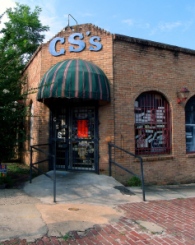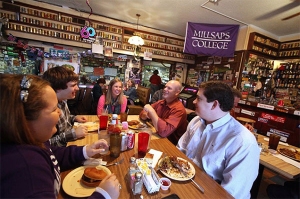Sooner or later you’re bound to hear someone say they can’t boil water or even worse (and this is the voice of experience speaking) hear it said about you.
Boiling water without a geyser was a mammoth leap for mankind, so much so that nowadays saying somebody can’t bring water to a boil casts a bad light not only on their cooking, but also on their other basic skills, not to mention their family. Even chemists should be able to boil water, and it should be made an exit requirement on the MCAT and LSAT as well. Not even clergy should be exempt, and if you can’t boil water, I don’t want you fiddling with my fuse box, either.
Shortly after we brought water to a boil on our own, we learned how to steam foods in sealed, slightly vented containers. Given that pottery was still in its infancy then, pressure cooking was probably a messy if not painful innovation; but steaming food was the Paleolithic equivalent of the microwave oven, a quick method for cooking dried grains and tough meats, the staffs of life before Stouffer’s. Starches and cheap cuts are not only inexpensive and nutritious but when properly prepared wonderful, anyone who takes an interest in cooking should learn how to use a pressure cooker.
This takes time. God knows I’ve burned everything except water at least twice, but when it comes to pressure cooking, I’m not taking all the blame. A pressure cooker can be as cantankerous as a maiden aunt and almost as noisy; the cooker’s regulator jiggles and bangs about before releasing a steady hiss that lets you know it’s at full steam. Unlike most other kitchen activities, cooking with pressure involves hearing more than seeing or smelling.
The first step is to get a cooker. I’m not prone to endorsements (meaning I don’t get paid for any), but Presto pretty much put the lid on canning kitchenware in North America, and after over a century their products are still an industry standard.
Buy a new 4-quart cooker, which will set you back about $30 retail. Once you tap into your inner earth mother and begin canning home-grown beets, you might buy a bigger, second-hand apparatus with dials and other gadgets, but until that happy occasion live with your new gallon of steam and get to know how it works.
I recommend practicing with cooking dried beans because they’re cheap and a quart of simply seasoned beans (especially the larger varieties such as kidneys, limas, and garbanzos) goes a long way in dozens and dozens of dishes all across the board. Kidneys are a fine example of this versatility; these big red beans stand out in soups and salads as well as sides.
Before cooking beans of any kind, scatter them on a flat surface and remove any rocks or clumps of earth you’re likely to find, as you’re likely to find a few. Pressure-cooked beans need two cups water to one cup beans. Beans need a bit of oil prevent frothing, which could clog up the cooker’s vent and put a serious hitch in your get-along. The chemical processes that make dried beans and grains froth under pressure elude me, but I suspect this preventative measure is the culinary equivalent of an oil slick.
What you do with your cooked beans is up to you. Be happy.












